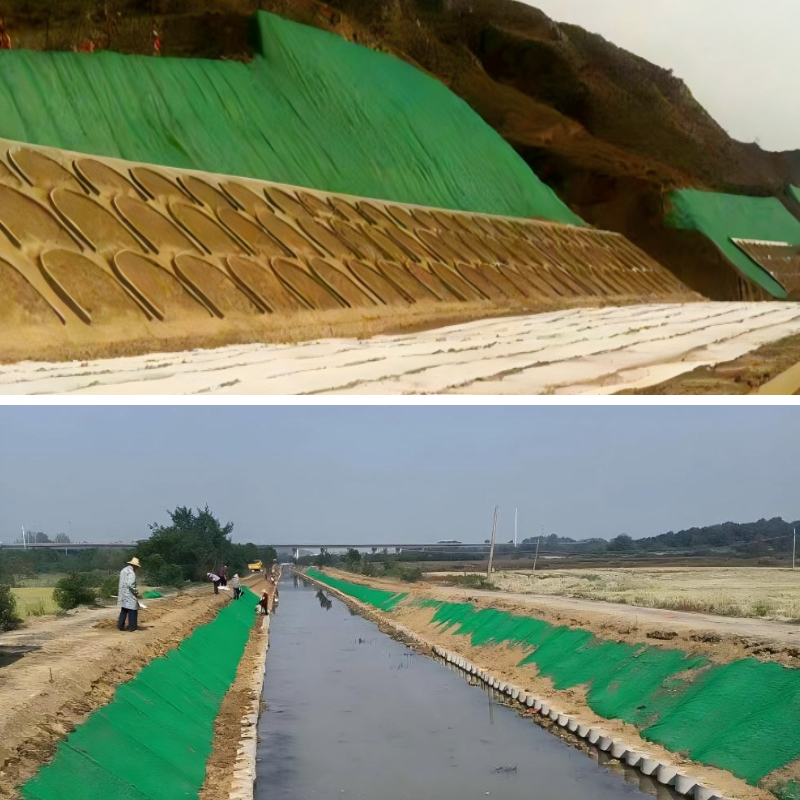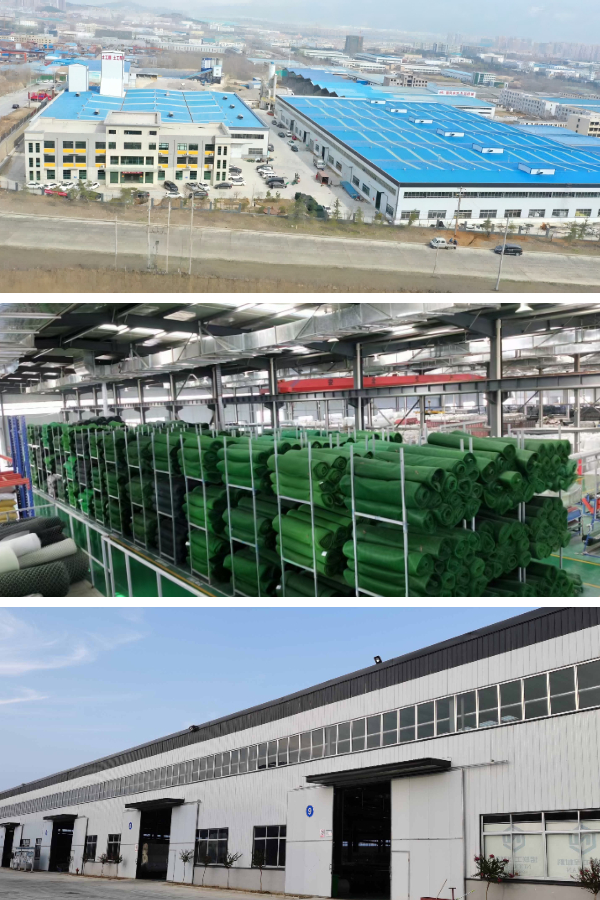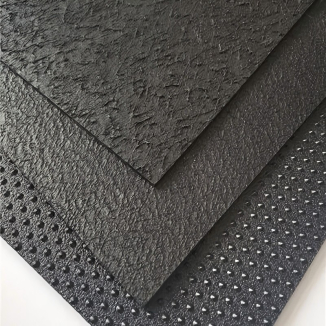Common Mistakes to Avoid When Selecting and Installing Geomat for Your Project
Geomat (also regarded as geotextile mat) is a integral geosynthetic cloth used to enhance soil, manage erosion, and enhance drainage in tasks like street construction, slope stabilization, landscaping, and coastal protection. Its potential to beautify task sturdiness and limit long-term renovation expenses makes it a go-to choice—but solely if chosen and hooked up correctly. Unfortunately, many groups fall into avoidable pitfalls: from selecting the incorrect geomat for their wishes to slicing corners all through installation. These errors lead to untimely fabric failure, venture delays, and expensive rework. To defend your investment, right here are the most frequent errors to steer clear of, alongside with how to repair them.
Mistake 1: Choosing Geomat Without Matching It to Project-Specific Needs
One of the largest mistakes is choosing a “one-size-fits-all” geomat as an alternative of aligning it with your project’s special requirements. Geotextile mats come in exceptional kinds (non-woven, woven, knitted) and specifications, every designed for precise tasks—ignoring this mismatch dooms the fabric to underperform.
Ignoring Application Purpose
Not all geotextile mats serve the equal function: some excel at erosion control, others at soil reinforcement or drainage, so the use of a light-weight non-woven geomat for residential landscaping erosion prevention works, however it will tear beneath motorway site visitors weight if used as avenue base reinforcement; this mismatch leads to cloth breakdown inside months, inflicting avenue agreement or slope collapse, so the restoration is to honestly outline your project’s core intention (e.g., “prevent riverbank erosion” vs. “strengthen building website online get right of entry to road”) and pick a geomat rated for that use, whilst asking suppliers, “Is this geotextile mat examined for [your particular application]?”
Overlooking Soil and Environmental Conditions
Soil kind (sandy, clay, acidic) and environmental elements (UV exposure, moisture levels, temperature extremes) without delay influence geomat performance—clay soils preserve water, so the usage of a non-permeable geomat traps moisture and reasons soil compaction and mat degradation, whilst acidic soils (pH < 5.5) wreck down uncoated polypropylene geotextile mats quicker with the aid of chemical corrosion; this mismatch can make a geomat lose 50% of its tensile electricity in 1–2 years, so the repair is to take a look at your soil’s pH and drainage potential first, select acid-resistant geotextile mats (e.g., polyester-based) for acidic soils, and choose UV-stabilized geomat with ASTM D4355 certification for high-UV areas like deserts.
Mistake 2: Skipping Material Quality Checks and Certifications
Low-quality geomat products—often offered at discounted prices—tempt groups searching to reduce costs. But these substances pass by key manufacturing steps (e.g., UV stabilization, energy testing) and lack enterprise certifications, main to speedy failure. Skipping first-class assessments is a high-priced mistake that undermines the complete project.
Buying Geomat Without Valid Certifications
Legitimate geotextile mats raise certifications verifying performance, such as ISO 9001 (quality management), ASTM D4632 (tensile strength), or GRI-GM (geosynthetic safety), whilst uncertified geomat regularly makes use of recycled or low-grade plastics that are brittle and inclined to tearing; the use of non-certified geomat for slope stabilization may additionally reason it to rip all through heavy rain, main to mudslides and property damage, so the restore is to usually ask suppliers for physical certification copies (not simply digital images), cross-verify certification numbers with issuing our bodies like ASTM International to keep away from fakes, and reject any geotextile mat besides third-party checking out reports.
Ignoring Durability Metrics
Key sturdiness metrics—tensile strength, abrasion resistance, and chemical resistance—determine a geomat’s lifespan, however many groups focal point solely on fee and omit these numbers, such as the usage of a geomat with tensile electricity < 10 kN/m that fails underneath heavy soil loads; a low-abrasion geomat in high-traffic areas (e.g., development web site paths) will put on skinny in 6 months and want full replacement, so the restoration is to assessment the geomat’s technical datasheet, make certain tensile energy ≥ 15 kN/m (per ASTM D4632) and abrasion resistance ≥ 80% power retention (per ASTM D3884) for heavy-use projects, and verify resistance to oils or solvents for chemical-prone web sites like industrial yards.
Mistake 3: Poor Site Preparation Before Geomat Installation
Even the nice geomat will fail if hooked up on an unprepared site. Rushing to lay the fabric besides clearing debris, leveling the ground, or addressing drainage troubles creates vulnerable factors that lead to tears, shifting, or moisture buildup.
Not Clearing Debris and Sharp Objects
Site debris—rocks, tree roots, broken concrete—punctures geotextile mats when included with soil or gravel, however many groups omit thorough clearing and expect the mat can “handle small obstacles”; a sharp rock beneath the geomat creates a hole, permitting soil seepage and lowering erosion manage effectiveness, and this gap expands over time to purpose slope instability, so the restoration is to use a rake or excavator to put off all particles large than two cm, and for rocky sites, add a 5–10 cm sand layer over the floor earlier than laying the geomat to act as a buffer in opposition to sharp objects.
Neglecting Ground Leveling and Drainage
Uneven floor makes the geomat stretch unevenly, growing tight spots that tear and free areas that entice water, whilst terrible drainage saturates the mat, weakening its fibers and advertising mould growth; an erratically laid geomat on a sloped website might also shift downhill all through rain, leaving soil uncovered to erosion, and trapped water can rot the geotextile mat’s fibers in humid climates, so the restoration is to use a laser degree to make sure the floor has a steady slope (no greater than 5% variant for flat projects) and installation French drains or perforated pipes close to the geomat’s edges to direct water away from the material.
Mistake 4: Incorrect Installation Techniques That Compromise Performance
Even with the proper geomat and a organized site, incorrect set up practices—like unsuitable tension, negative seam work, or inadequate overlap—ruin performance. These errors are frequently due to lack of coaching or speeding to meet deadlines.
Applying Too Much or Too Little Tension
Stretching the geomat too tight at some point of set up pulls its fibers, decreasing tensile energy and inflicting tears, whilst laying it too unfastened leads to wrinkles that lure water and forestall acceptable soil contact; over-tensioned geotextile mats on avenue tasks may additionally crack when heavy vans bypass over, and unfastened mats can shift and create gaps in erosion control, so the repair is to use a tensioning device (e.g., a geotextile tensioner) to observe consistent, manufacturer-recommended anxiety (usually 5–10% of the mat’s tensile strength) and rent skilled installers for massive projects.
Botching Seam and Overlap Work
Seams (where two geomat rolls meet) are the material’s weakest points, and frequent errors encompass the usage of tape alternatively of warmth welding for woven geotextile mats or overlapping rolls via much less than the 15 cm enterprise minimum; poorly sealed seams permit water and soil to ignore through, undermining the geomat’s purpose—for example, a poorly seamed geotextile mat in a keeping wall can also purpose soil leakage and wall collapse—so the repair is to use warmness welding (per ASTM D1647) for woven geomat, use needle-punching or geosynthetic-specific adhesive for non-woven geomat, constantly overlap rolls via 15–30 cm, and check seams with a pull check earlier than overlaying with soil.
Conclusion
Selecting and putting in geomat efficaciously is now not simply about following steps—it’s about heading off luxurious shortcuts that compromise your project’s longevity. The errors outlined here—mismatching geotextile mats to task needs, skipping first-class checks, terrible web page prep, and unsuitable installation—are all preventable with cautious planning and interest to detail. By taking the time to pick a certified, application-specific geotextile mat, put together your web site thoroughly, and use suited set up techniques, you make sure the cloth grants on its promise: more desirable soil, higher erosion control, and decrease long-term upkeep costs. Don’t let small mistakes lead to large failures—prioritize correctness from resolution to installation.
Contact Us
Company Name: Shandong Chuangwei New Materials Co., LTD
Contact Person :Jaden Sylvan
Contact Number :+86 19305485668
WhatsApp:+86 19305485668
Enterprise Email: cggeosynthetics@gmail.com
Enterprise Address: Entrepreneurship Park, Dayue District, Tai 'an City,
Shandong Province









